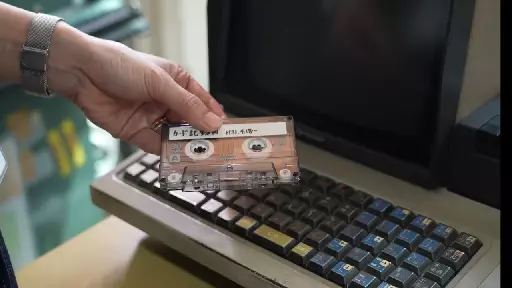One reason modern architecture looked so different than past constructions was because its key founders literally didn’t see the world in a “typical" fashion.

let me list two not federated options.
but both are self hosted.
-
lobsters. one active instance is lobste.rs but i know of https://սարեան.ցանցառներ.հայ
-
if you use gemini protocol, you probably know about it: bubble is a reddit like software. i know about two deployments, the original, by the author is at gemini://bbs.geminispace.org
users also can have their blog feeds on it.
xmpp (jabber)
i saw somewhere yesterday that it also removed siskin (or snikket? or both?) xmpp client.
i believe this apple update was introduced after the court which ruled that it is ok to force you to unlock with the fingerprint, but not ok to demand the pin.
there was a case when police wanted to unlock a gangster's girlfriend iphone.
yeah, i have a historical oberon compiler for palm pilot.
it has to do with tho opposite, software that controls users.
gui program developed with lazarus/freepascal, compiled for amiga, works same way: https://www.youtube.com/watch?v=yKGS6fcLLOE

YouTube Video
Click to view this content.
video features old computer with tui interface at miyata textile co. the operator loads software from tape on MZ-80K2 CLEAR(or CLEAN?) COMPUTER.
screen shows: FOUND MR-463 (DATA) LOADING MR-463 (DATA)
the software writes: ** AUTOMATIC PATTERN PUNCHING SYSTEM ** MR463-01 and then there is a menu.
looks amazing.
>Because in low res some 416x274 is possible, in med res maybe can pull out 832x274 - still little less pixels than in mono.
Note for subscribers: if you are interested in my Ada programming articles only, you can use this RSS feed link. ( TL;DR ? Want to see nu...

CLOG - The Common Lisp Omnificent GUI. Contribute to rabbibotton/clog development by creating an account on GitHub.

The Twitch streamer Tsoding has been learning Ada over the last week by building a game with the raylib graphics library. It’s been fun to watch, albeit a bit frustrating when he only skims the documentation then claims it doesn’t answer his question. Day 1 Day 2 Day 3 Day 4 Day 5 Day 6 Day ...

companies that do IC design, do it under linux. traditionally they were using proprietary unixes, but today it is mostly linux and redhat or compatible systems.
engineers are using rhel workstations from dell and hp that are supported by vendors to work under linux: let's say bios updates are possible to run from within linux.
their whole workflow depends on unix with many custom scripts (shell, perl, tcl) and simulations, usage of shared filesystems, and even x forwarding.
afaik IT departments in such companies aren't happy to support linux workstations and the trend is to move the workflew to linux servers and let the engineers to connect to those via ssh, vnc or x or commercial solutions like 'citrix'.
my understanding is also that companies design some requirrments, though maybe based on what is available on the market, and love to have support and solutions that are integrated with each other. microsoft still has everybody hooked up, their 'active directory' feels to IT people necessary, they also use microsoft's disk encryption, and/or third party windows software which encrypts everything written to usb flash drives to prevent leakage of what they call 'intellectual property'.
it is of course possible to do luks encryption of linux disk drives, but afaik rhel doesn't support it, or rhel versions these companies tend to use, since they tend to use very outdated systems, even eol unsupported systems, because 'customers still use those'.
i am also not aware of linux versions of those draconian services that encrypt everything that gets written to the flash drives, or that monitor/control computer usage, web requests, etc, so companies are interested to concentrate unix systems in data centers and get rid of linux end user workstations because these require custom approaches or draconian control software is not available, while windows users can be controlled better, with available corporate solutions.
Retired postman Rodney Holbrook never expected to capture a Ratatouille-style scene in his own shed.

does mastodon have something like high priority/importance notifiication? i can imagine how such sms may come, but in order to get that notification via twitter or mastodon, what should you do? run the apps in background and check all notifs, like someone faved your food foto, and then you are like, okay, this wasn't it.
i just don't know how this works and really curious.
for about one year i used exclusively motorola droid4 as mobile device. it runs maemo-leste: mobile linux distribution with nokia's hildon desktop (revived maemo fremantle sources) on top of devuan linux.
i also myself maintain about ten packages in maemo-leshe repository.
but most of the people won't use motorola droid 4 and maemo-leste.
they won't tolerate small screen and they need their 'apps' for 'banking' or 'twitter' or whatever.
i do not use banking apps or twitter or reddit or instagram or whatever they use, so i don't care.
i used pidgin on that device, even connected to 'ms teams' for work via pidgin.
worked more stabre than real 'teams' client, but of course pidgin is not the mosh usable app on a small screen.
today i use dino on it for e2e encrypted xmpp messaging. in devuan chimaera dino is old and buggy. well what can i do?
it is okay.
but how many people are ready to give up shiny androids or ioses for this cyberpunk device?
even camera doesn't work on it.
well, it is normal for mobile linux distributions that camera doesn't work ot most devices. if it works for photos then not for videos.
well i carry an old small point and shoot with me. i think though it is crappy it makes pdotos better than many phones do.
but i cannot recognize qrcodes with phone.
recently i am trying to use pinephone.
it is more powerful and it has more recent software in postmarketos. my environment is sxmo. it is hde best phone environment ever created, i think. but how many people will agree with me? even pinephone users prefer phosh or kde plasma or something more fancy.
'''''''''what i do with pinephone?
first of all i charge it always. it is like tamagocci, if you don't feed it it will die. so i carry a power bank with me.
it runs about six hours if i dont touch it (without suspend) and about two hours if i run dino.
in best case, if dino won't make the device unresponsive.
i have an open source program called songrec on it, it can use shazam api and it recognizes music played around. it is a very useful app. and it is adaptive, works in both portrait and landsgape modes.
what else do i do with it? well, browse the web sometimes. but it is often a torture. and i wondur why dont i just do the same on laptop.
yeah and podcasts with gpodder-adaptive.
and radio with shortwave.
i know why i do this: i want to use mostly libre software so i am ready for inconveniences. but not many people are ready to this.
for many years i used sailfish. it is very polished. i would recommend it to 'regular people' instead of android.
but i do not like that it doesn't run on mainline on most devices, so proprietary linux kernel is necessary, the ui framework isn't libre so we cannot use an app we used to on other platform most of the time. so u r getting locked to sailfish. it is hard to leave it because u cannot take your apps with you. in order to port apps written with their silica classes one needs to rewrite the ui completely.
so i am a person who only used linux phones for years asd i know it is not easy foc regular people.
for me it is ok. i do not need much more than sxmo as environment. i only wish pinephone to not hang as often because of dino. (:
for about one year i used exclusively motorola droid4 as mobile device. it runs maemo-leste: mobile linux distribution with nokia's hildon desktop (revived maemo fremantle sources) on top of devuan linux.
i also myself maintain about ten packages in maemo-leshe repository.
but most of the people won't use motorola droid 4 and maemo-leste.
they won't tolerate small screen and they need their 'apps' for 'banking' or 'twitter' or whatever.
i do not use banking apps or twitter or reddit or instagram or whatever they use, so i don't care.
i used pidgin on that device, even connected to 'ms teams' for work via pidgin.
worked more stabre than real 'teams' client, but of course pidgin is not the mosh usable app on a small screen.
today i use dino on it for e2e encrypted xmpp messaging. in devuan chimaera dino is old and buggy. well what can i do?
it is okay.
but how many people are ready to give up shiny androids or ioses for this cyberpunk device?
even camera doesn't work on it.
well, it is normal for mobile linux distributions that camera doesn't work ot most devices. if it works for photos then not for videos.
well i carry an old small point and shoot with me. i think though it is crappy it makes pdotos better than many phones do.
but i cannot recognize qrcodes with phone.
recently i am trying to use pinephone.
it is more powerful and it has more recent software in postmarketos. my environment is sxmo. it is hde best phone environment ever created, i think. but how many people will agree with me? even pinephone users prefer phosh or kde plasma or something more fancy.
what i do with pinephone?
first of all i charge it always. it is like tamagocci, if you don't feed it it will die. so i carry a power bank with me.
it runs about six hours if i dont touch it (without suspend) and about two hours if i run dino.
in best case, if dino won't make the device unresponsive.
i have an open source program called songrec on it, it can use shazam api and it recognizes music played around. it is a very useful app. and it is adaptive, works in both portrait and landsgape modes.
what else do i do with it? well, browse the web sometimes. but it is often a torture. and i wondur why dont i just do the same on laptop.
yeah and podcasts with gpodder-adaptive.
and radio with shortwave.
i know why i do this: i want to use mostly libre software so i am ready for inconveniences. but not many people are ready to this.
for many years i used sailfish. it is very polished. i would recommend it to 'regular people' instead of android.
but i do not like that it doesn't run on mainline on most devices, so proprietary linux kernel is necessary, the ui framework isn't libre so we cannot use an app we used to on other platform most of the time. so u r getting locked to sailfish. it is hard to leave it because u cannot take your apps with you. in order to port apps written with their silica classes one needs to rewrite the ui completely.
so i am a person who only used linux phones for years asd i know it is not easy foc regular people.
for me it is ok. i do not need much more than sxmo as environment. i only wish pinephone to not hang as often because of dino. (:
"smartphone" doesn't matter. it is a computer that runs software. the only question is who controls that software? free/libre software is by definition one that you control. and what you described means that you dont control your device.
so advices: easy way is to just install lineage os or graphene or some other open source android version. you will control it. i dont advice to install google play services.
other advice: you can get a sony phone because it can run sailfish os. also i believe those are great. otherwise install open source android, lineage or something.
sailfish has android emulator (it costs money) but sailfish is not android. it is a linux/qt based system. very polished. not as polished as open source android, but it is fast, lightweight and beautiful. native sailfish apps arent feature rich but do you really need feature rich? then you can get more apps from fdroid store and use android emulation layer.
other, better but harder option: get a device which is well supported by postmarketos.
postmarketos has several user interfaces but neither of those is what you have used to. i believe it is the best option but you must prepare yourself to be able to change. most probably you wont have a working camera. thats ok, i live like that.
is that a building in front de seine district of paris? will appreciate if you tell us what is that building.
i was searching for the original report at ipcc.ch and didn't find it. then i used tineye to find the picture which theonion shared, and found it here - published in 2017. so it was probably in one of the old reports? that's the biggest resolution i was able to find. other findings by tineye feature only theonion, which reposted the photo from twitter probably. but theonion didn't list the original link and i was not able to find the original link.
vewn
i didn't know vewn, and i didn't know umami. thank you for mentioning them!
thank you so much for all the amazing work.
on a sidenote, how do you create the site, is it generated? and how do you manage to add new uploads to the rss feed?
(my understanding is that the page remains the same, it just has a new image among others, but there is an rss feed which indicates changes of the same page.)
